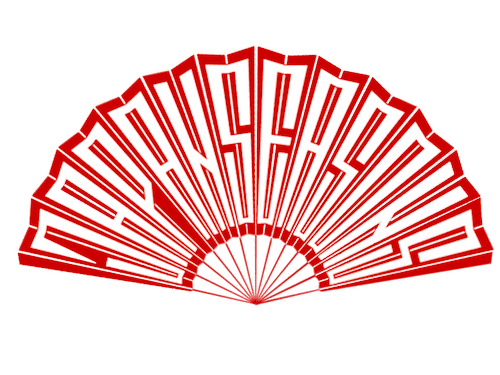Magome Station is the 43rd station of the old Nakasendo Road that connected Kyoto and Edo and ran through the mountains of Honshu Island. It is also the last of 11 stations of the Kisoji Road (the part of the Nakasendo that runs through the Kiso Valley). The post station town prospered during the Edo period, primarily because of the money-lending business. However, in the late 19th century, the new Chuo railway line was built, and Magome gradually declined. In recent decades buildings of the late Edo period and early Meiji period have been restored, and the town has become a popular tourist destination for everybody who wants to enjoy the atmosphere of old Japan.
- Tours
- Nakasendo Trail Tour
Japan Tour “Private Tour to Japan with the Nakasendo Trail”
Japan tour program including the Japanese Alps and the Nakasendo Trail.
For centuries, the Nakasendo Trail connected the most important cities of Japan: the samurai capital of Edo (now Tokyo) and the Imperial Kyoto. Along the paved roads on which travelers traversed the weeks-long journey were lined postal stations with rows of restaurants and inns where weary travelers could eat and rest after long hours on the road. Some of the old stations are still there today.
On this tour you will also see the ancient capital of Nara, the Old Capital of Kyoto, White Heron Castle Himeji-jo and the “Crow Castle” Matsumoto-jo, and visit the holy city of Koya with accommodation at a monastery hotel.
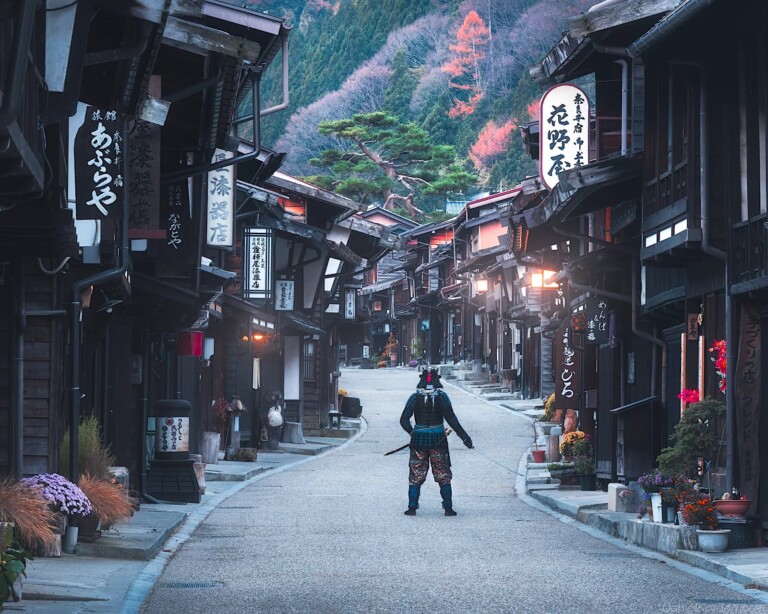
CUSTOMIZED ITINERARY FOR YOUR DATES
Dates
- Private tour
Duration
- 10 days / 9 nights
Price
- On request
Daily itinerary
Day 1
Meet your tour guide at the Arrivals
Transfer to Tokyo by private transport
Check-in at the hotel, rest
Evening Tokyo city tour: Shibuya district and Shibuya Sky observatory, walk around Ginza
Back to the hotel
Day 2
Meet your tour guide at the hotel lobby
Tokyo sightseeing by private transport: Asakusa district, Sensoji Buddhist Temple, Nakamise shopping street, TeamLab museum, Japanese garden
Back to the hotel
Day 3
Meet your tour guide at the hotel lobby
Move to Matsumoto by train
Matsumoto sightseeing: Matsumoto Castle, walk around Matsumoto city
Check-in at the hotel, rest
Day 4
Meet your tour guide at the hotel lobby
Passing through the Japanese Alps to the Nakasendo Tract by private transport
Sightseeing of the Nakasendo Trail: Tsumago, Magome, and Narai postal stations
Transfer to the station
Move to Kyoto
Check-in at the hotel
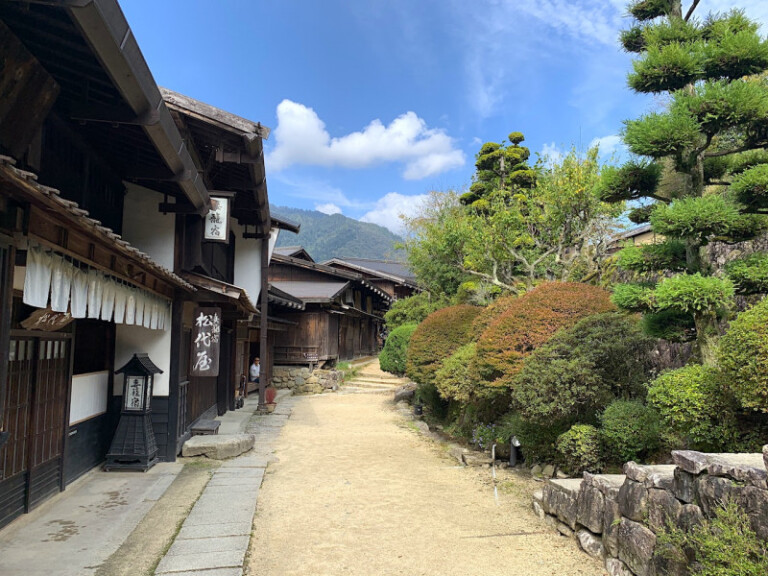
Magome Station
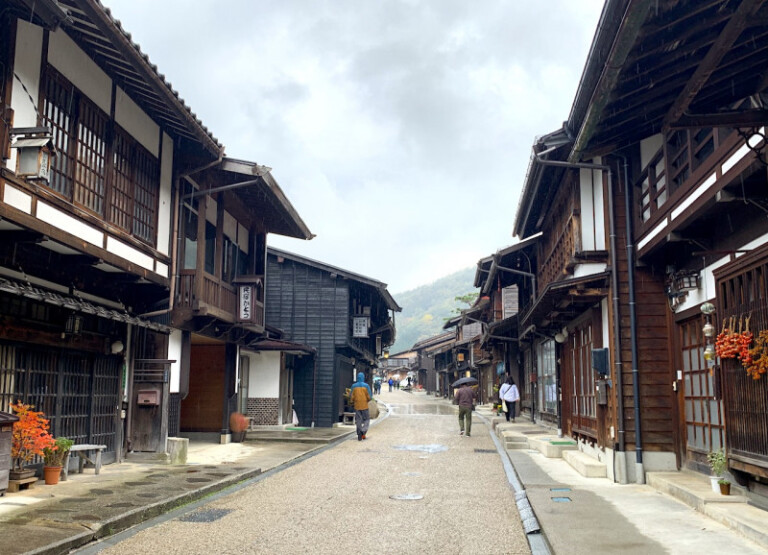
Tsumago Post Station
Tsumago is a small town in the Kiso Valley in the Central Japanese Alps, Nagano Prefecture. In the Middle Ages, it was the 42nd of the 69 post stations on the Nakasendo Road between Kyoto and Edo and the 10th of the 11 stations on the Kisoji Road in the Kiso Valley. Thanks to its favorable location, the town prospered. However, at the end of the 19th century, the Chuo railway line was built, and Tsumago gradually declined. In 1968, citizens began a campaign to attract tourists to the city. They reconstructed the remaining buildings from the Edo period and made the town look like a medieval post station. Most houses belong to private individuals and are available for viewing only from the outside. But some have been converted into stores, restaurants, ryokan hotels, and historical museums, including the honjin, the town’s main inn for Edo-era officials.
Day 5
Meet your guide at the hotel lobby
Move to Kyoto by Shinkansen bullet train
Meet your guide at the train platform at Kyoto Station
Kyoto sightseeing by private transport: Golden Pavilion, Zen Rock Garden, Kiyomizu-dera Temple, the traditional streets of Kyoto
Kaiseki dinner with geishas
Back to the hotel

Kinkaku-ji (Golden Pavilion)
Kinkaku-ji Temple, often called the Golden Temple, is one of Japan’s most famous temples and Kyoto’s main attractions. Built at the end of the 14th century, this complex, with its three-story pavilion covered with gold leaf, captivated the minds of its contemporaries. The famous Japanese writer Yukio Mishima captured its fate and glory in the novel “The Golden Temple.” Today Kinkaku-ji Temple is a must-see on any traveler’s itinerary in Japan. In addition to the famous pavilion, the UNESCO World Heritage Site also features a traditional walking garden, small waterfalls, and a tea house, representing the culture of the samurai era.
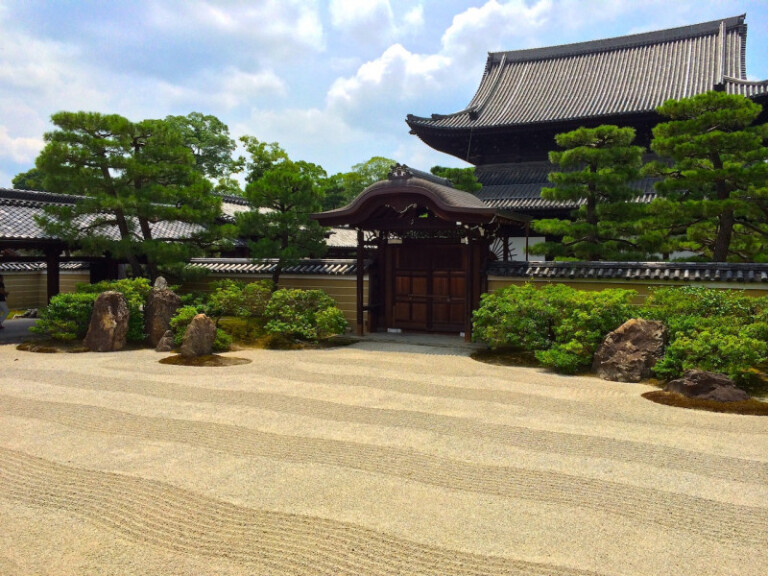
Zen Rock Garden
Zen Rock Garden, or dry garden, with its hidden meanings and allegories, is a beautiful place for contemplation and meditation. Each garden element has meaning, and no randomly placed pieces exist. A dry garden is an orderly system subject to well-established aesthetic rules. Sea waves spread before the viewers, the mountain peaks rise above the clouds, and animals freeze in different poses. This microcosm of Zen Buddhist aesthetics is created using stones of various shapes. The distinctive symbolism of rock gardens is a unique manifestation of the multifaceted Japanese culture.
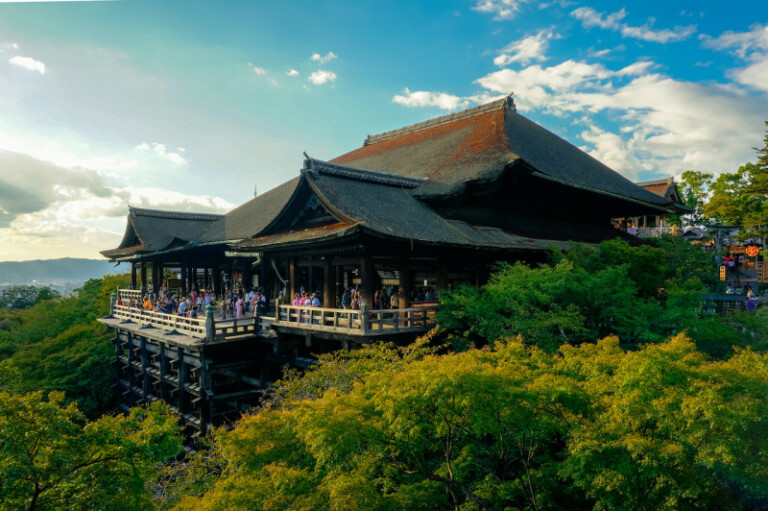
Kiyomizu-dera Temple (Pure Water Temple)
The Pure Water Temple, or Kiyomizu-dera, is one of Kyoto’s most famous and most visited temples and is a UNESCO World Heritage Site. It was founded on a mountainside near a spring. Its clear water is said to bestow health, longevity, and wisdom. The temple’s main attraction is its main hall, with an open veranda built on stilts over a cliff. The structure, assembled without a single nail, towers over Kyoto, offering a beautiful view of the old capital. Cafes and stores lining the road to the temple sell Kyoto sweets, ceramics, and souvenirs for all tastes.
Day 6
Meet your tour guide at the hotel lobby
Kyoto sightseeing by private transport: Japanese sword master class and bowl meditation, Nijo Castle, Fushimi Inari Shrine with the endless red gates corridor
Back to the hotel
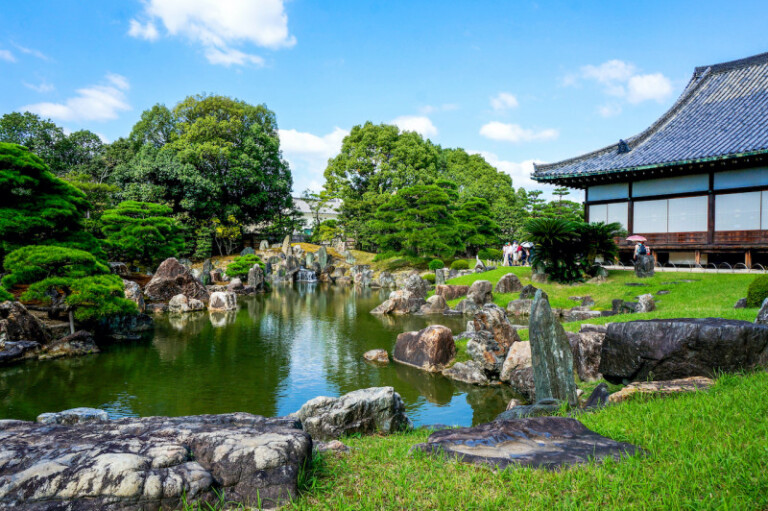
Nijo Castle (Nijo-jo)
Nijo Castle is a UNESCO World Heritage Site in Kyoto, built in the early 17th century for the powerful shogun Tokugawa Ieyasu. During his visits to the imperial capital, the shogun stayed in the castle with several ornate palaces and a beautiful garden. One of the complex’s palaces, Ninomaru, has survived to this day. The palace’s interior is painted by famous artists of the Kano school and is richly decorated with wood carvings and gold. Tokugawa Ieyasu himself admired the garden created by Kobori Enshu, the great master of the tea ceremony and landscape design.
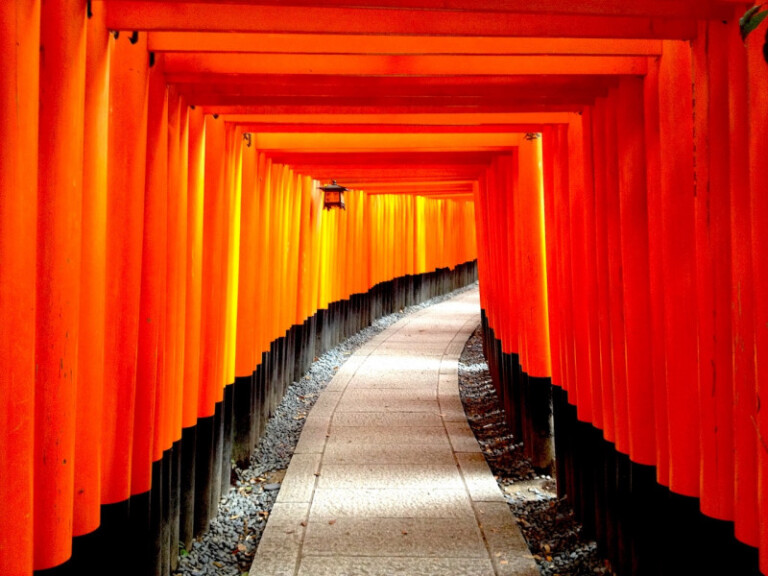
Fushimi Inari Shrine
Fushimi Inari Shrine is one of the most important shrines of the Old Capital and the head shrine for a network of over 32,000 subordinate shrines across the country.
The god Inari, to whom the shrine is dedicated, is considered the patron saint of rice farming and artisans, merchants, and business people in general. According to tradition, a generous offering can earn the god’s favor. In Fushimi Inari Shrine, the best gift is considered to be a temple gate-torii. The popularity of the god Inari can be judged by the fact that the entire shrine area is densely packed with thousands of red gates of various sizes, forming red corridors leading from the main altar to the top of the mountain.
Day 7
Meet your tour guide at the hotel lobby
Move to Himeji by Shinkansen bullet train
Visiting White Heron Castle Himeji-jo
Move to Osaka
Osaka sightseeing: Midosuji, Umeda Sky building observatory, Dotonbori district
Return to Kyoto
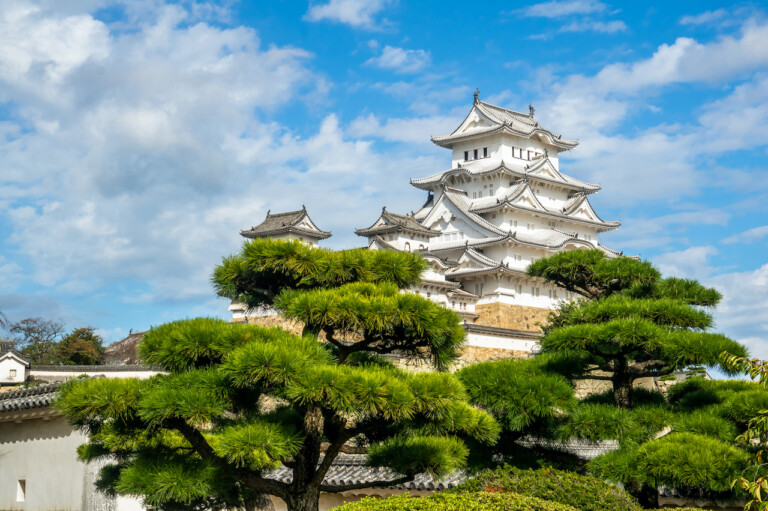
Himeji Castle
Himeji Castle is one of Japan’s 12 historically preserved castles and is considered the most beautiful. It is a UNESCO World Heritage Site. The castle was built in the early 17th century and was second in size and beauty only to the lost Edo Castle, the residence of the Tokugawa shoguns. Unscathed by wars, fires, and natural disasters for 400 years, the castle is often featured in movies about the samurai era. Fans of classic Japanese cinema remember it for Akira Kurosawa’s “Ran.” The impregnable castle holds secrets of Japanese military strategy and keeps stories of gods and ghosts. The name “White Heron Castle” reflects the beauty of its walls.
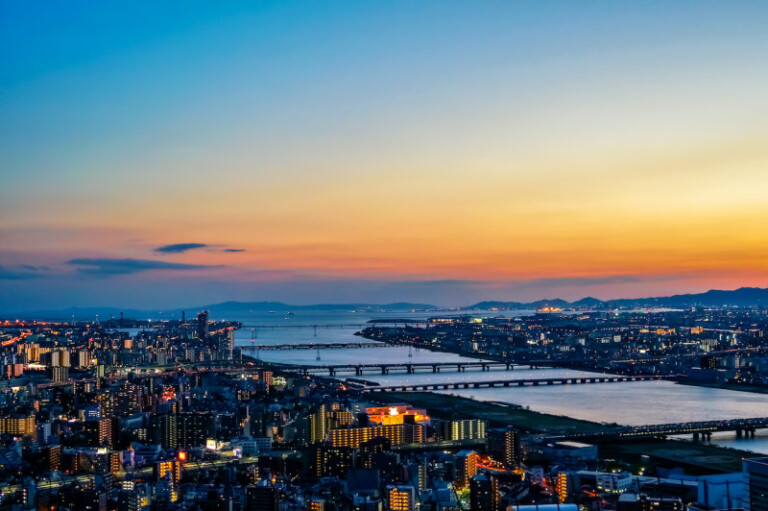
Umeda Sky Building
Designed by architect Hara Hiroshi in 1993, this 173-meter building is the 19th tallest in Osaka and one of the most notable parts of the cityscape. Two forty-story towers are connected at the top by Floating Garden Observatory, whose glass verandas offer beautiful city views. The basement floor, with stores and restaurants, resembles a Japanese city street of the early 20th century. Various companies’ offices occupy the building. There is a lovely park with fountains at the base of the towers.
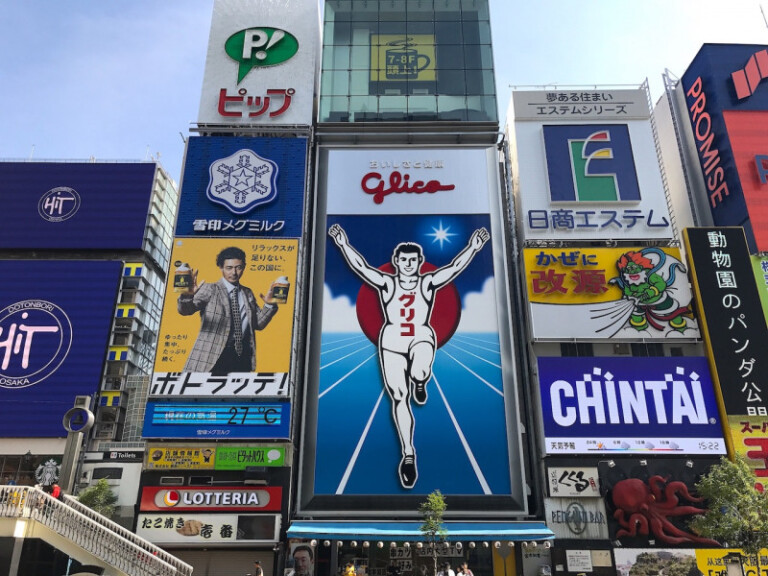
Dotonbori District
Dotonbori is a neighborhood that stretches along the Dotonbori canal between Dotonboribashi Bridge and Nipponbashi Bridge. The history of Dotonbori goes back four hundred years. In the early 17th century, this area was designated for entertainment venues by a government decree. By the end of the Edo era, there were six Kabuki theaters, five Bunraku theaters, and other smaller establishments. A restaurant area eventually grew around the theaters, and the district became one of the most popular places for evening entertainment for citizens and visitors. By now, there’s little left of the traditional theaters, but the area is still famous for its active nightlife, entertainment, and delicious food.
Day 8
Meet your tour guide at the hotel lobby
Move to Nara
Nara sightseeing by private transport: Todaiji Temple, Deer park
Transfer by private transport to the sacred mountain Koya-san
Check-in at the monastery hotel "shukubo"
Walk around the temple town, visit ancient Okunoin Buddhist cemetery
Vegetarian dinner at the hotel

Todai-ji Temple
Todai-ji is a Buddhist temple complex whose main building is one of the largest wooden structures in the world. Built in the mid-8th century by order of the emperor with donations from all over the country, the temple features the biggest bronze statue of Buddha in Japan. Almost all the bronze produced in Japan at the time was used to cast the colossal sculpture. The complex also has several unique wooden structures, including the giant Nandaimon Gate with the famous Nio guard figures, the Bell Tower, and Nigatsu-do Hall. The entire complex is a UNESCO World Heritage Site.
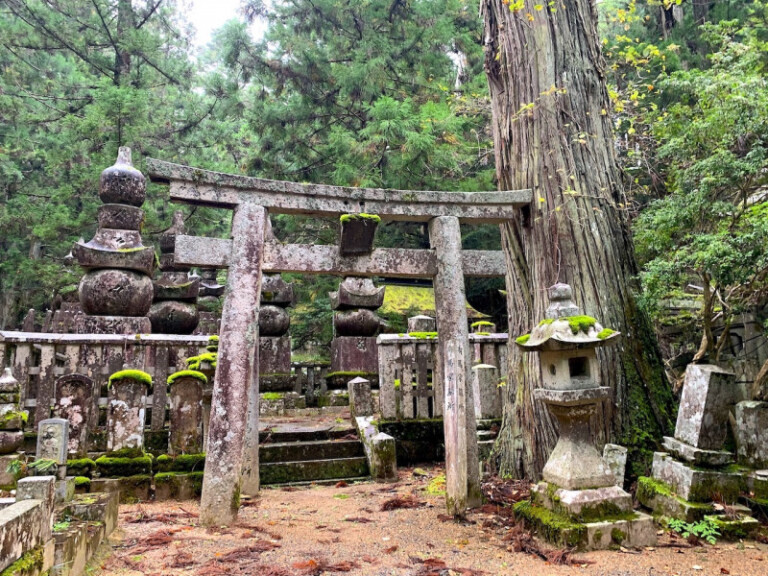
Koya-san (Mount Koya)
The Koya Mountain Monastery Complex is one of the most important centers of Buddhism in Japan, founded 1,200 years ago by the monk Kukai. In addition to its religious and historical value, it is also an important cultural monument. The majestic architecture of the complex, paintings by famous artists, unique artifacts accumulated over hundreds of years, the largest rock garden, and one of the oldest cemeteries in Japan – all of it provide a rare opportunity to have an insight into the Japanese philosophy of life and death.
Day 9
Meet your tour guide at the hotel lobby
Koya-san sightseeing by private transport: Kongobuji Temple
Transfer by private transport to Shin-Osaka Shinkansen station
Move to Tokyo by Shinkansen bullet train
Check-in at the hotel, rest
Day 10
Meet your tour guide at the hotel lobby
Transfer to the airport by private transport with a guide
Departure
